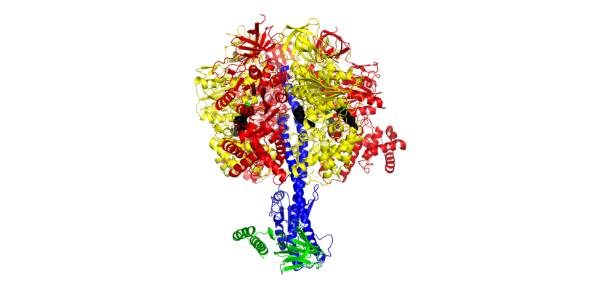
Submitted by Penny Peck on Wed, 26/06/2019 - 00:00
Adenosine triphosphate (ATP), the fuel of life, is produced by a molecular machine consisting of two motors linked by a rotor. One generates rotation by consuming energy derived from oxidative metabolism or photosynthesis; the other uses energy transmitted by the rotor to make ATP from adenosine diphosphate and phosphate. In many species, the machine is reversible, and various mechanisms regulate reversal. In some eubacteria, including the pathogenic organism, Fusobacterium nucleatum, the machine is constructed in a similar way to those that reverse, but the reverse action is impeded, evidently because the products of ATP hydrolysis remain bound to the machine.

